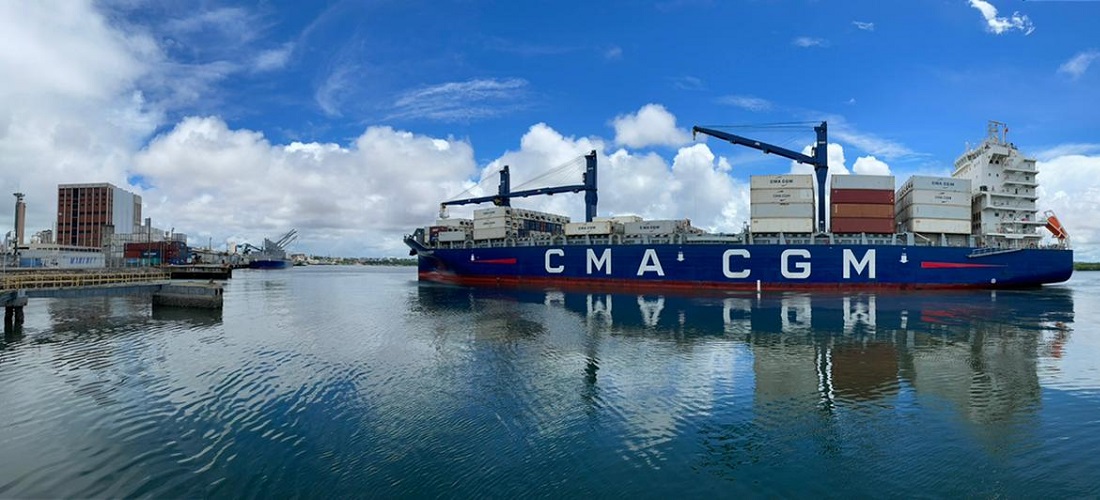
Port of Natal bottlenecks restrict region’s global economic outreach
Jan, 20, 2023 Posted by Gabriel MalheirosWeek 202303
Maritime freight is responsible for taking 91% of Rio Grande do Norte’s exports out of Brazil, generating USD 676.6 million in foreign transactions, according to the state’s industry association CIN/Fiern. However, US$ 536.9 million, or 79.3% of all the state’s maritime exports, were shipped through other ports in the country, particularly neighboring Pernambuco and Ceará. The Port of Natal, based in the capital city of Rio Grande do Norte (RN), was involved with only US$ 93.8 million of all sea exports, 9.6% less than in 2017 (US$ 103.8 million), due to its bottlenecks.
Limitations such as the lack of fenders on the Newton Navarro Bridge and the depth of the maritime terminal are factors that hamper operations. The bridge’s height is also cited as a reason for impending shipments. Without many in-state options, the ports of Suape, in Pernambuco, and Pecém and Mucuripe, in Ceará, have been chosen as outlets for exporters to send their products abroad.
Through Suape, according to the CIN/Fiern survey, the equivalent of US$ 351 million in maritime exports produced in RN in 2022 was sent abroad. Through Ceará, R$ 142.8 million were exported. In addition, the ports of Santos (US$ 19.8 million) and Salvador (US$ 15.9 million) were also used.
According to the specialist responsible for CIN/Fiern, Luiz Henrique Guedes, the Port of Natal only exports part of the fruits produced in Rio Grande do Norte (the state’s most prominent export commodity), while the Port of Mucuripe, in Fortaleza, sends off the remainder. “Cargo shipments to the United States and other destinations leave through Pecém and Suape,” comments Guedes. In addition, the Port of Suape, which led the outflow of goods produced in the RN in 2022, was used for fuel oil shipments, representing, in monetary terms, US$ 330.1 million.
The diversion of goods away from the Port of Natal is not exactly new, according to Luiz Roberto Barcelos, the director of the Brazilian Association of Fruit Exporters (Abrafrutas). “The Port is too small to receive two shipping companies [CGM is currently the only company operating, and it has already announced that it will cease operations in the state this year]. There is no space in the storage area to deposit empty containers, insufficient container reefer sockets, and no place for cargo trailers to stay when they arrive,” explains Barcelos.
See below a chart comparing containerized exports and imports at the Port of Natal between Jan 2019 and Nov 2022, according to the DataLiner business intelligence service.
Containerized cargo – Port of Natal | Jan 2019 – Nov 2022 | TEUs
Source: DataLiner (click here to request a demo)
Port of Natal Bottlenecks
For example, the lack of fenders on the Ponte Nova [New Bridge] shortens the number of hours it is operational. The CEO of Companhia Docas do Rio Grande do Norte (Codern), Brigadier Carlos Eduardo da Costa Almeida, says that, without installing security systems, it is impossible to allow port operations during nighttime like those in other terminals in Brazil.
Furthermore, Fábio Queiroga, from the Rio Grande do Norte Fruit Growing Executive Committee (Coex), points out that the draft near the bridge’s foundation is a significant problem. “The height of the [Newton Navarro] Bridge and depth below it does not allow large ships to cross. Therefore, only CMA CGM has small enough ships to complete the journey toward the port today.”
A bathymetry study is being planned, according to Codern’s president. In addition, the plan is to use a large sonar to search for sand banks that would justify dredging. The current draft height at the Port of Natal is 12 meters. Only ships up to 200 meters are permitted to operate on the site.
Source: Tribuna do Norte
To read the original reporting, acess: http://www.tribunadonorte.com.br/noticia/79-das-exportaa-a-es-mara-timas-foram-escoadas-por-outros-estados/556130
-
Fish
Nov, 21, 2023
0
Multiplication of fish? Brazil exports twice the amount of snapper caught
-
Ports and Terminals
Aug, 03, 2021
0
SP identifies Delta variant in crew of ship docked in Santos
-
Fish
Apr, 17, 2024
0
South Korea Allows Imports of Brazilian Shrimp-based Products
-
Ports and Terminals
Jan, 10, 2025
0
Governor of Santa Catarina Inspects Long-Awaited Project at São Francisco do Sul Port



